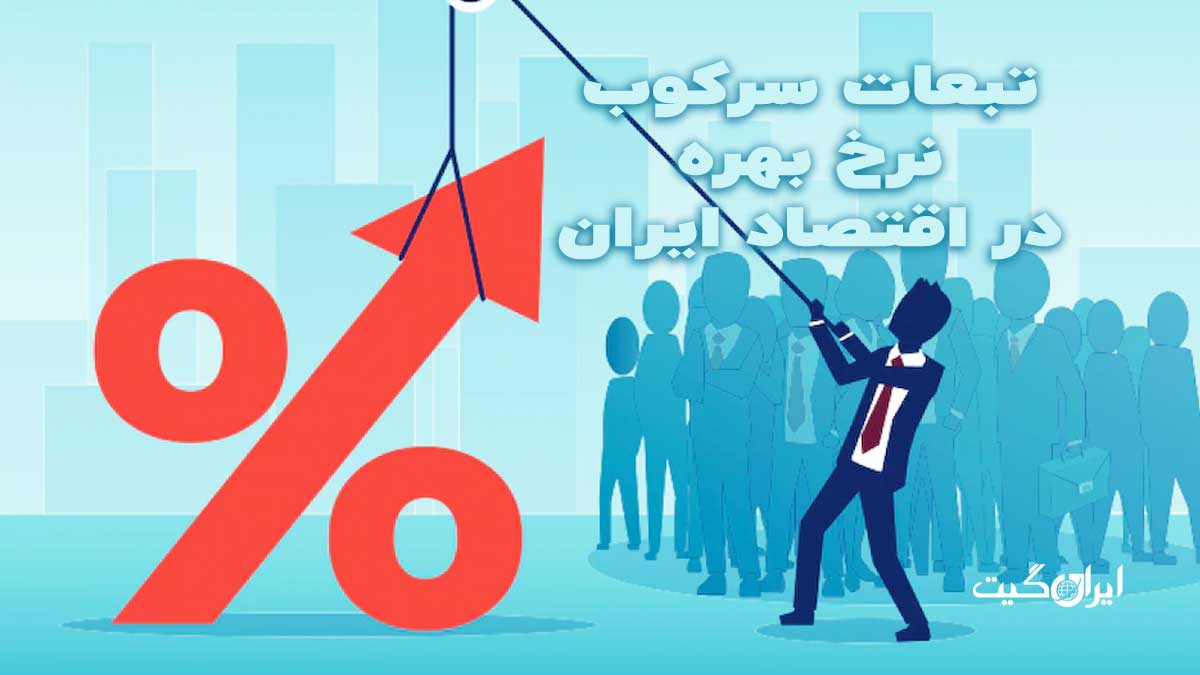The consequences of suppressing interest rates in Iran’s economy
Why is inflation not being controlled in Iran?
According to Iran Gate’s report, many economists are questioning why the Central Bank of Iran is resistant to using interest rates as a tool to control inflation. This is despite the fact that global economic powers have been raising interest rates in response to the upward trend in inflation in recent years, and have actually achieved significant and positive results in curbing inflation.
In recent times, the world’s largest economies have experienced significant inflationary spikes, even reaching unprecedented levels in some cases. This has compelled central banks in these countries, including the United States and many European powers, to utilize monetary tools to control inflation since the middle of 2021. For over a year now, the Federal Reserve of the United States has been forced to use these same tools to curb inflation, despite dissatisfaction from wealthy entities in the world’s largest economy. Importantly, these central bank measures have yielded results, effectively curbing inflation to a significant and meaningful extent.
The golden tool for controlling inflation
The word inflation is probably the most frequently used economic term that people refer to in their everyday conversations on the streets and in the markets. In the general public’s mind, inflation is seen as equivalent to price increases or a decrease in purchasing power. But in summary, inflation refers to the devaluation of the national currency, which subsequently leads to price tensions in the market or, in other words, the high cost of goods and services.
Economists believe that in order to stop the trend of inflation or, in other words, the process of devaluing the national currency, actions must be taken to strengthen the monetary foundation. According to the majority of experts, since inflation is a monetary phenomenon, monetary tools should be used to control it. Otherwise, any action or temporary relief measures will have either limited effects or the opposite result, causing the policy maker to face intensified inflation instead of controlling it briefly.
Hence, it is said that the interest rate channel is the best tool for controlling inflation in a specific and short period of time. This tool represents the value of money and can establish the balance of monetary transactions in the country. In other words, increasing the interest rate means increasing the value of money in these transactions.
From the perspective of economists, the main solution to tackle inflation is to use interest rates in order to restore the lost value of a country’s currency. In simpler terms, when inflation and a decrease in purchasing power occur in a crisis-stricken economy, the best option for changing the game is to utilize interest rate channels.
Ignoring a global experience
Currently, Iran is among the top 10 countries facing the highest inflation rates in the world. As mentioned, global powers, starting from mid-2021 with the recession caused by the COVID-19 pandemic and the beginning of the Ukraine war in early 2022, are experiencing inflationary jumps.
It should be noted that this phenomenon has affected not only superpowers like the United States and Britain but also the economic platforms of countries like Turkey and Russia. Although in some cases, such as Russia, other factors like Western sanctions after the invasion of Ukraine have had a significant impact on exacerbating inflation, the noteworthy point is that almost all of these countries have included a common action in their agenda to combat and even unprecedented inflation, and that is to make use of interest rate tools.
Although there is an exception, the central bank in Turkey has not stopped suppressing interest rates despite breaking a 23-year inflation record last year. This is happening while the Turkish government has changed the heads of the central bank in order to create an environment for investment and pursue a policy of interest rate suppression.
In fact, Turkey is the only country that holds a special position in the club of inflationary economies, despite having favorable economic indicators. The meaningful correlation between intensified inflation in this country and the Turkish central bank’s failure to utilize interest rates is clearly evident when comparing official statistics and figures among the mentioned countries.
However, inflation in Turkey took a downward trend in 2023, and according to the statista website, the annual inflation rate in Turkey reached about 55% in February 2023. Interestingly, there has been a simultaneous decrease of about 30% in inflation in less than six months in Turkey, along with a relative increase in interest rates in the country. This means that although the government has forced the central bank to suppress interest rates in recent years, a change in the relative growth rate of interest rates has led to a decrease of over 30% in inflation in Turkey.
Although experts believe that the interest rate in Turkey is still negative and a 55% inflation rate cannot reflect the economic health of a country, it seems that the monetary policy makers in Turkey have come to the conclusion that pushing for a policy of suppressing interest rates not only does not strengthen investment in the country, but also devalues the lira and exacerbates poverty in the country.
What is the reason for suppressing interest rates in Iran?
As mentioned, the interest rate in Iran also has a significant gap with the inflation rate, and the policymakers do not take any action to bridge this deep gap. But what is the reason for this happening and why does the central bank insist on continuing the policy of suppressing interest rates despite seeing global experiences?
To answer this question, we need to consider the mechanism of determining interest rates in Iran. The institution known as the Money and Credit Council is responsible for determining interest rates. The head of this council is also the governor of the Central Bank of Iran, who is responsible for final approval and implementation of the decisions of the Money and Credit Council.
However, the problem here is that the composition of members in this council is such that the conflict of interest always influences the decisions of the Money and Credit Council. Members, ranging from government ministers to parliamentary representatives who participate as supervisory members in the meetings, each have their own specific viewpoints. This flaw has caused monetary policy to transform from a specialized issue into a matter of governance that entails numerous sensitivities.
Therefore, it is said that the policymaker cannot consider the interest rate as a monetary tool and adjust it as needed. This once again brings to mind the problem of the lack of independence of the central bank in Iran, an independence that is found in the free use of tools by central bank governors, such as the interest rate.
However, the current mechanism not only deprives the monetary policymaker of this possibility but also causes the central bank to deviate from its main mission, which is the preservation and protection of the national currency’s value. Naturally, when such a situation occurs, controlling inflation will not be the primary priority for the policymaker. Therefore, the need to utilize existing tools is also overlooked.
This is despite the fact that central bank governors in previous eras have directly or indirectly expressed dissatisfaction with the existence of such mechanisms. Even Ali Salehabadi, the former head of the central bank, who faced severe criticism from economists, emphasized the need to increase interest rates in his statements. However, it is evident that his motivation and that of his associates against the will of the members of the Monetary and Credit Council has not reached a constructive point.
Of course, there are many reasons and factors that have led to over 50 years of inflationary rule in Iran. Naturally, controlling these factors can have mitigating effects on the upward trend of inflation, including the issue of direct and indirect borrowing of the government from the central bank, corruption in the distribution of rent, among others. However, the point here is that conflicts of interest have led to the central bank being handcuffed and unable to use the most effective tools to control inflation.
What is the reason for the decrease in the exchange rate?
The Iranian banking system is bankrupt.
English
View this article in English


